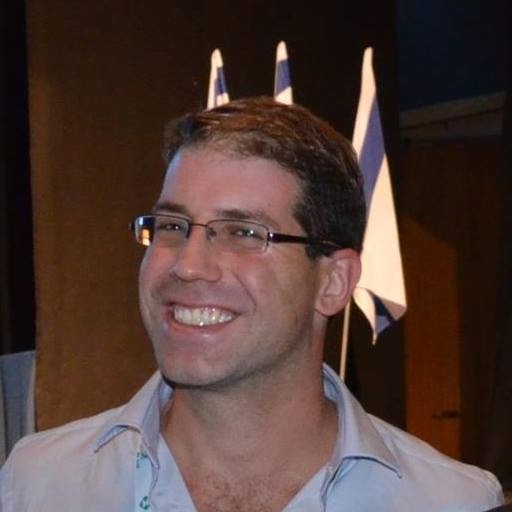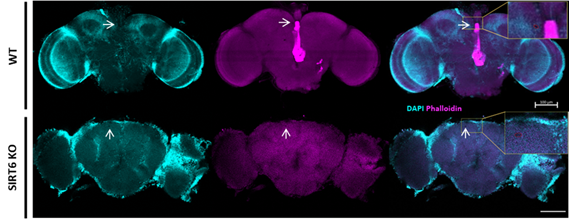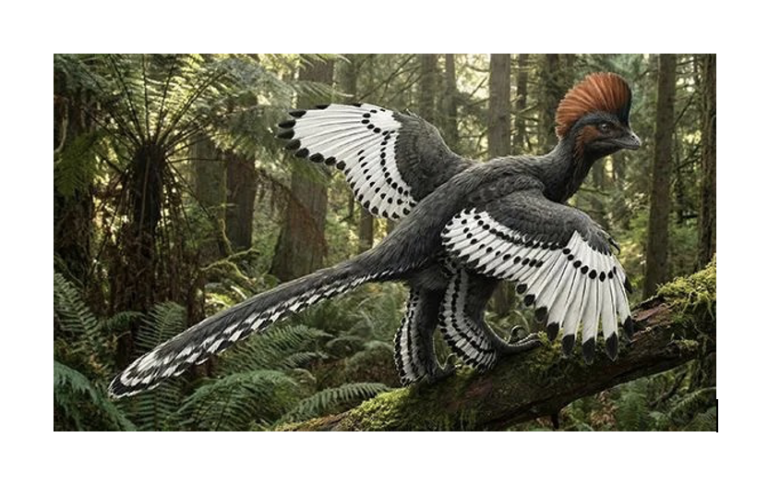Canada-Israël : un nouveau pacemaker biologique à base de cellules souches embryonnaires

[:fr]Une nouvelle génération de pacemakers biologiques pourrait apporter une véritable révolution par rapport aux stimulateurs cardiaques traditionnels largement utilisés aujourd’hui. Une équipe de recherche israélo-canadienne vient de montrer l’efficacité d’un stimulateur biologique sur des cultures cellulaires et des rats vivants. Il est basé sur l’utilisation de cellules qui possèdent des propriétés fonctionnelles semblables à aux cellules cardiaques humaines. L’équipe de recherche comprend, entre autres, le Pr Lior Gepstein de la faculté de médecine au Technion et directeur du département de Cardiologie à l’hôpital Rambam. Les expériences sur des rats ont été réalisées par le Dr Udi Nussinovitch dans le laboratoire de Lior Gepstein.
En temps normal, le «stimulateur naturel» du cœur (nœud sinusal) est constitué d’un amas de cellules cardiaques dédiées responsables du déclenchement du signal électrique qui conduit à la contraction du cœur. C’est lui qui « bat la mesure ». Un dysfonctionnement peut entraîner une fréquence cardiaque lente et perturber la fonction cardiaque, conduisant à un état de faiblesse, des vertiges, l’évanouissement, l’insuffisance cardiaque et même la mort. « Avec l’âge, l’activité électrique cardiaque, qui naît dans les oreillettes, peut ainsi se faire moins régulièrement ou la transmission de l’influx électrique peut être moins efficace des oreillettes aux ventricules cardiaques« , précise le site allodocteurs. L’implantation d’un stimulateur artificiel comportant des électrodes insérées dans diverses zones du cœur permet de corriger ce dysfonctionnement. Plus de 40 000 stimulateurs cardiaques sont implantés chaque année en France.
Mais les pacemakers sont très contraignants : intervention chirurgicale invasive, danger d’infection, problèmes hormonaux, batterie épuisée, panne… En outre, chez les enfants, dont le cœur est en pleine croissance, le stimulateur électronique ne s’adapte pas à l’augmentation progressive du volume cardiaque.
L’équipe de chercheurs dirigée par la Dr Stephanie Protze et le Pr Gordon Keller du Centre McEwen de médecine régénératrice à Toronto, a élaboré un protocole de différenciation pour créer des cellules stimulatrices à partir de cellules souches embryonnaires humaines.
Les cellules souches embryonnaires sont des cellules qui peuvent se différencier potentiellement en des centaines de types de cellules matures (musculaires, osseuses, neurones…). Les chercheurs ont mené les cellules souches embryonnaires à se développer en cellules de stimulation cardiaque.
Co-auteur de l’étude, le Pr Lior Gepstein est un expert de renommée internationale en cellules souches, en particulier dans l’utilisation de cellules souches pour la réparation de problèmes cardiaques. Dans une étude récente, il avait présenté un nouveau traitement des troubles du rythme cardiaque au moyen de la lumière (opto-génétique), publiée dans Nature Biotechnology.

« Le stimulateur créé à partir de cellules souches embryonnaires présente des propriétés moléculaires, électriques et fonctionnelles caractéristiques des cellules du pacemaker naturel », a précisé le Pr Gepstein. « Ce développement va permettre aux scientifiques d’étudier le cœur d’une nouvelle manière. Mais surtout cela offre une «chaîne d’assemblage» avec un réservoir illimité de cellules cardiaques. Les greffes de cellules cardiaques ont restauré un rythme cardiaque normal chez 6 des 7 rats testés ».
L’étude a été menée dans le cadre de la coopération entre le Technion et le réseau universitaire canadien de santé (UHN), basé à Toronto. Il y a trois ans, ces deux organismes ont mis sur pied le Centre international Technion-UHN pour l’innovation cardiovasculaire, dont la mission est de développer de nouveaux traitements des maladies cardiaques. Le Pr Lior Gepstein a dirigé la coopération du côté israélien.
Traduction/adaptation Esther Amar pour Israël Science Info
Publication dans Nature Biotechnology, 12 décembre 2016[:en]A new class of biological pacemaker is promising notable advantages over traditional, electronic pacemakers that are widely used today. In the healthy body, the heart’s ‘natural pacemaker’ (the sinoatrial (SA) node), consists of a group of dedicated heart cells – SA node pacemaker cells – which are responsible for initiation of the electrical signal leading to the contraction of the heart. A dysfunction in activity results in a slow heart rate and could disrupt cardiac function, leading to weakness, dizziness, fainting, heart failure and even death. Treatment requires the implantation of an artificial, electronic pacemaker, which corrects the dysfunction of the natural pacemaker mechanism using electrodes inserted into various areas of the heart.
Publishing in The journal Nature Biotechnology, the Canadian-Israeli research have introduced a biological pacemaker whose effectiveness has been demonstrated in both cell cultures and live rats. The group includes Technion Prof. Lior Gepstein from the Rappaport Faculty of Medicine at the Technion and Rambam Heath Care Campus.
The biological pacemaker strategy is based on the use of cells that are functionally similar to natural pacemaker cells. The Canadian-Israeli team of researchers, spearheaded by Dr. Stephanie Protze and Prof. Gordon Keller from the Toronto’s McEwen Center for Regenerative Medicine, applied knowledge in developmental biology to develop a differentiation protocol for the creation of pacemaker cells from human embryonic stem cells.
Embryonic stem cells are cells that can, potentially, turn through proliferation into hundreds of types of mature cells (muscle cells, bone cells, neurons etc.). The researchers were able to direct the embryonic stem cells to develop into cardiac pacemaker cells. Experiments conducted in the lab demonstrated the effectiveness of these cells as a substitute for natural pacemaker cells.
Co-author Prof. Lior Gepstein, of the Technion Rappaport Faculty of Medicine and Director of the Cardiology Department at Rambam Heath Care Campus, is an internationally renowned expert in stem cells, particularly in the use of stem cells in repairing heart defects. One of his latest studies, which presented a new approach to the treatment of abnormal heart rhythm by means of light, was published earlier this year in the same journal (Nature Biotechnology).

“The pacemaker generated from embryonic stem cells exhibits the molecular, electrical and functional properties characteristic of human pacemaker cells,” said Prof. Gepstein. “Therefore, what we have here is an effective and promising alternative to natural pacemaker cells in the event of their dysfunction. This development is significant both in terms of research, because it will enable scientists to study the heart in new ways, and in practical terms – since we are presenting an ‘assembly line’ here for an unlimited reservoir of pacemaker cells to treat patients with heart rhythm problems.”
To demonstrate the future clinical use of the cells as biological pacemakers, experiments on rats were conducted in the Gepstein laboratory by Dr. Udi Nussinovitch. Pacemaker cell transplants restored normal heart rhythm in 6 of the 7 rats that were tested. “We have previously demonstrated the concept of biological pacemakers, but until now the cells we used contained a mixture of pacemaker cells with other heart cells,” said Prof. Gepstein. “Together with our Canadian partners, we present a method for producing a population of pure pacemaker cells and, as stated, we prove that they work well as a substitute for natural pacemaker cells that have been damaged.”
Electrical pacemakers have many limitations, including the need for an invasive surgical procedure, danger of infection, a lack of hormonal sensitivity and a limited duration of activity (due to battery depletion). Moreover, when it comes to treating children whose hearts are still growing, the electrical pacemaker does not adapt itself to the gradual increase in cardiac volume.
Prof. Gepstein and his partner at the Technion and Rambam, Dr. Udi Nusinoch, note that the study was led by Prof. Gordon M. Keller from McEwen Centre for Regenerative Medicine and also included collaboration with Dr. Peter Backx, senior scientist at the Peter Munk Cardiac Centre, both from the University Health Network in Toronto.
The study was conducted within the framework of cooperation between the Technion and the Canadian University Health Network (UHN), which is headquartered in Toronto. Some three years ago, the two bodies established Technion-UHN International Centre for Cardiovascular Innovation aimed at developing new ways to treat heart disease. Prof. Lior Gepstein led the initiative from the Israeli side.
Publication in Nature Biotechnology, December 16th 2016[:]








